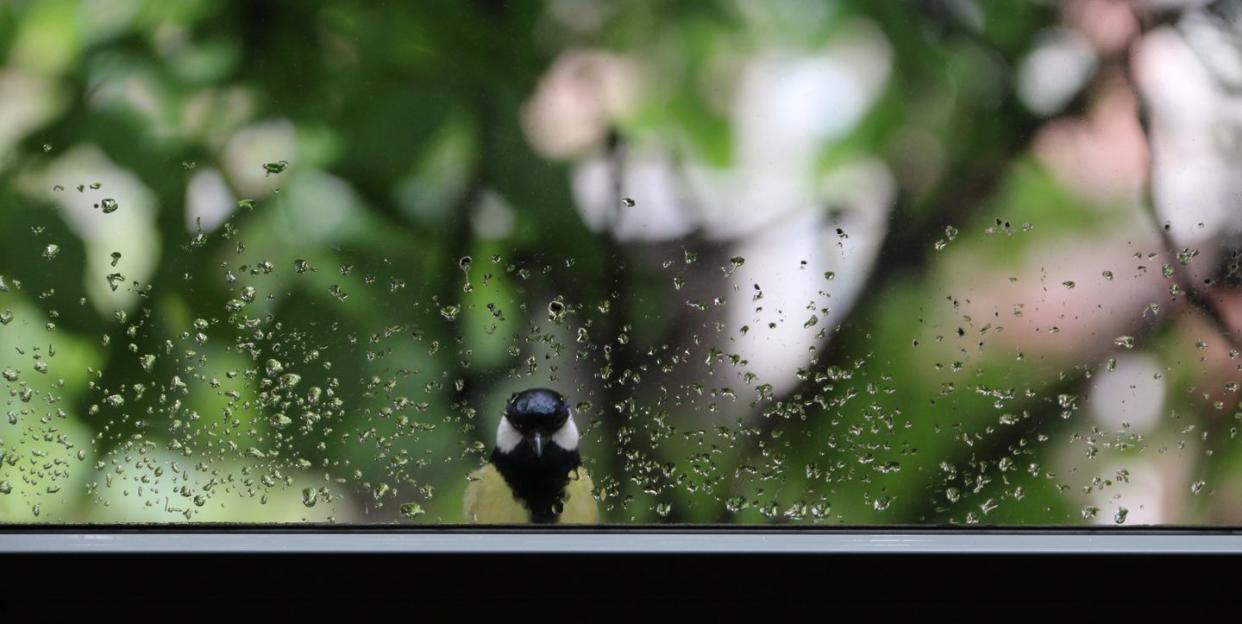NYC's Buildings Will Become Safer for Birds

New York has passed the most sweeping law to prevent bird window collisions in the nation.
Birds are killed in huge numbers by the large glass surfaces in every U.S. city.
The films and decals that prevent bird deaths are inobtrusive and very effective, and New York’s real estate industry supports this law.
Crain’s New York reports that New York City has passed legislation requiring all new construction to have bird-friendly glass. New York is the largest U.S. city so far to pass such a law. The green certification group Leadership in Energy and Environmental Design (LEED) already offers a pilot credit for bird safety compliance, suggesting that future LEED certification requirements could include a bird safety element.
San Francisco was the first city to require bird-safe glass, citing that window collisions kill up to 5 percent of all birds. But with well under a million residents and arguably the most liberal population in the country, San Francisco is a more straightforward case than NYC, which is at least 10 times larger and slightly less liberal. Crain’s reports that the Audobon Society considers the New York policy the furthest-reaching bird policy in the nation to date. It requires new construction and significant restorations both to install bird-friendly windows.
For existing buildings, this could be a bird-friendly film with a pattern of dots that birds can see, but that don’t interfere much with visibility, similar to the light tint of retrofitted heat-resistant film. These products will likely improve as their use becomes mandatory in more markets, which is another reason the New York policy is so huge.
There are also opaque die-cut decals in shapes like leaves and birds that you can apply directly to a window surface, giving birds a visual reference for the idea that they’re not looking through just empty air. But birds can also strike windows in an effort to fight their own reflections, so an overall coating helps to prevent that as well.
Crain’s reports that while a real estate industry group initially took issue with the new policy, their concerns have been addressed in the final version. That’s surprising for a city where landlords notoriously run the entire show, throwing tenants out at whim, raising rents 200% or more, turning buildings co-op almost overnight—but that, too, has been mitigated this year by some important victories in laws that benefit tenants, which the real estate industry also protested.
Studying birds is hard because of how mobile and agile even large groups of birds are, with wild reflexes and the ability to just fly away out of reach. To trap a bird in anything but the most gentle possible way risks injuring it, which isn’t just cruel, but also ends up defeating the purpose of catching and releasing a research animal. One of the largest groups of birds ever collected is made of specimens that crashed into buildings. The prevalence of these deaths means that the group is inherently pretty randomized.
The Audobon Society said in a 2014 study it estimates 100 million to 1 billion birds die annually by colliding with buildings. The Virginia Tech Corporate Research Center conducted its own study of a campus of buildings with different amounts of lawn, surface area of glass, and more to pick apart where the most birds were dying. San Francisco’s Golden Gate Park studied its museum building’s bird deaths before and after applying preventive decals and films. Both studies point to the need for mitigation, and the Golden Gate study showed how much even minimal efforts helped to prevent bird deaths. Hopefully the new law in New York will lead to safer streets for many thousands, or even millions, of birds.
You Might Also Like

